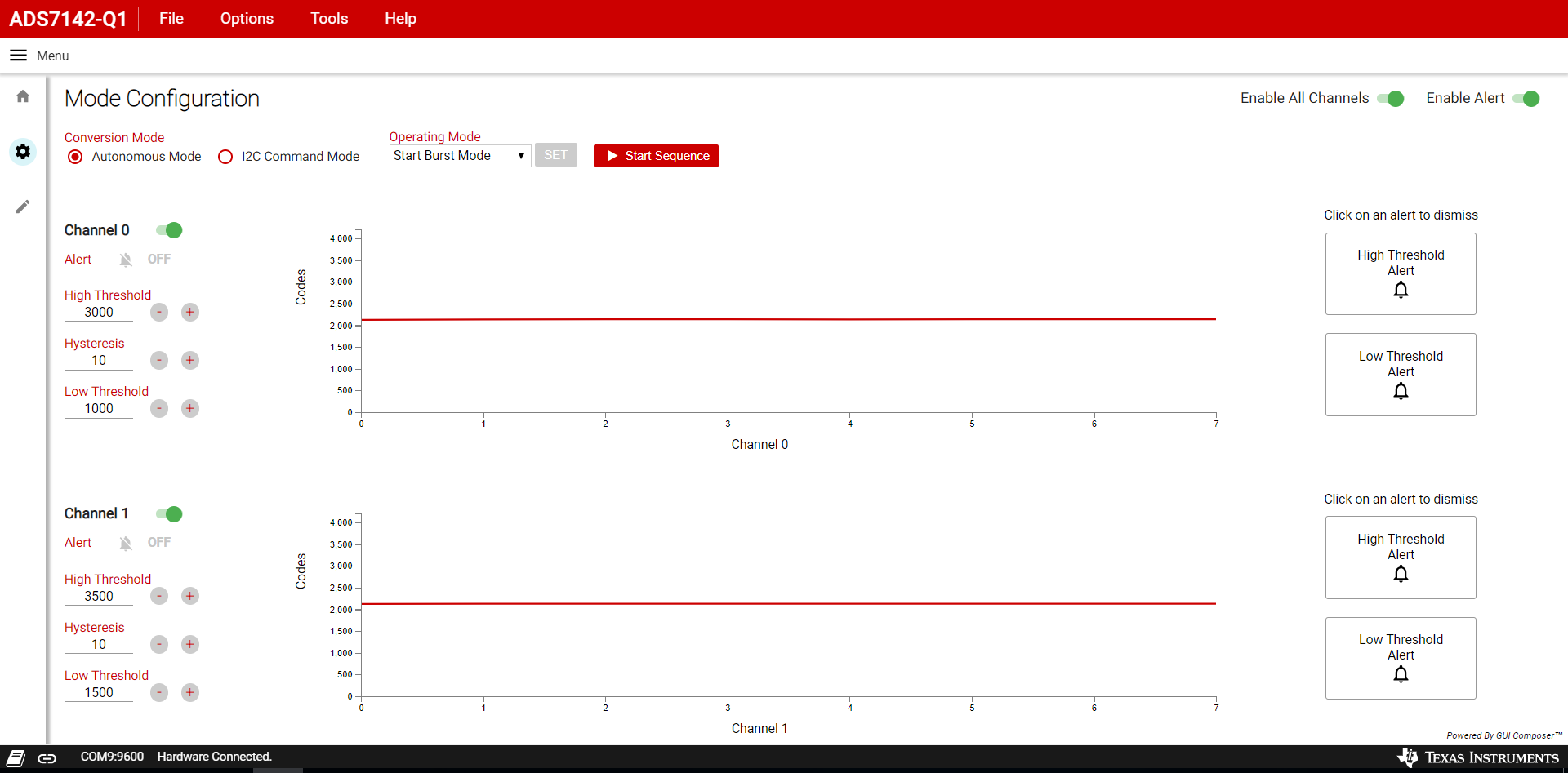SBAU321B November 2018 – June 2021 ADS7142 , ADS7142-Q1
4.1.1 Start Burst Mode
When Start Bust Mode is selected from the Operating Modes drop-down menu and the SET button is pressed, the device is configured to store 16 conversion results into the data buffer of the device. The device will stop converting once the data buffer is filled. To understand the steps required to configure the device in this mode, refer to the ADS7142-Q1 data sheet.
Figure 4-1 highlights the ADS7142-Q1 GUI working in Start Burst Mode.
 Figure 4-1 Data Capture in Start Burst Mode
Figure 4-1 Data Capture in Start Burst Mode